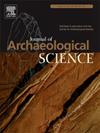Understanding mammal resource choices and subsistence strategies during the Holocene Climate Optimum: Integration of evidence from palaeodistribution modelling, animal bones and archaeological remains in the farming-pastoral ecotone, northern China
Abstract
The farming-pastoral ecotone (FPE) is considered to be the most sensitive and unstable area in relation to the surrounding environment in northern China. The ecological improvement during the Holocene Climate Optimum (HCO) profoundly influenced livelihoods and adaptability of early sedentary communities. The reason for diverse utilization of mammals and specific subsistence strategies among different FPE sites remains unclear due to the lack of reconstructions demonstrating explicit spatial distribution and abundance of species that people ate. In five case studies during HCO from FPE in China, I illustrate what palaeodistribution modelling powered by Species Distribution Models (SDMs) tells us about three different large and medium-sized mammal species, and how the integration of this information with Site Catchment Analysis (SCA) helps to understand resource choices and subsistence strategies in these different sites. Analysis indicates that reduced residential mobility at FPE during HCO is associated with the spatial distribution of mammals within site catchments. Inhabitants of the ecotone may adapt to distinct mammal resources by long-distance logistical mobility, high residential mobility, improving technological flexibility, or intensifying the utilization of certain wild species. This evidence provides valuable insights into the highly flexible adaptability of early sedentism in FPE.

 求助内容:
求助内容: 应助结果提醒方式:
应助结果提醒方式:


